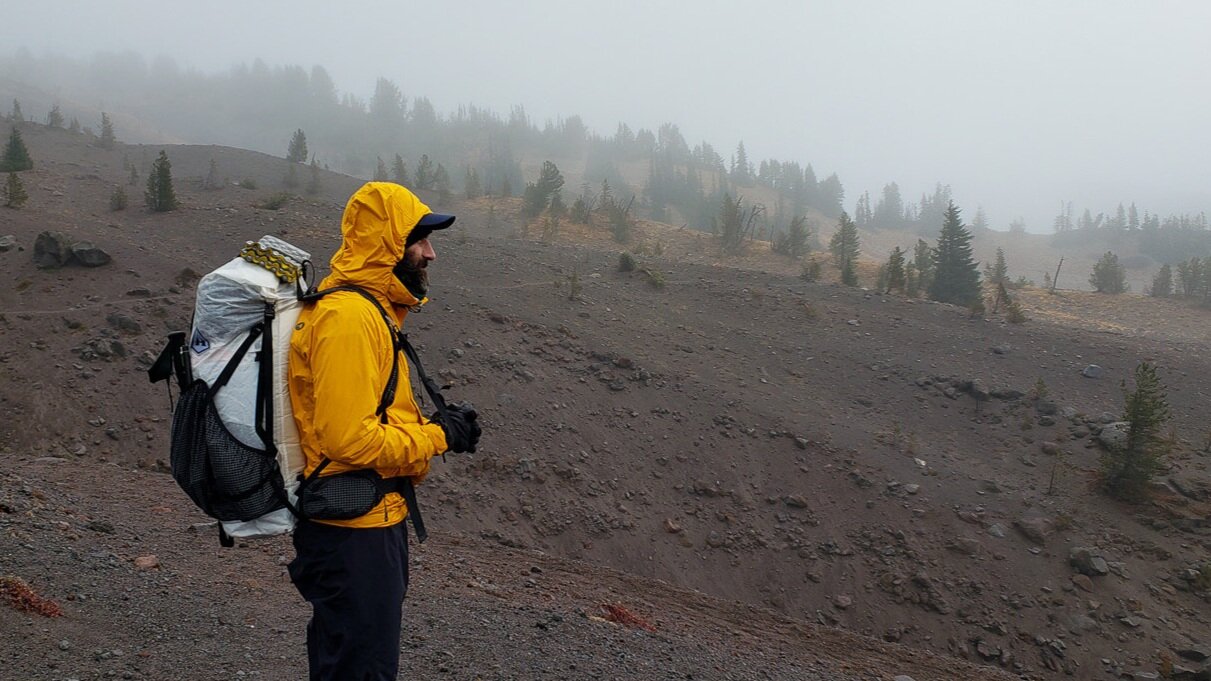
There’s no doubt that rainy and cold conditions add an element of challenge to getting outside. But, don’t let a drizzly forecast stop you from being active and immersing yourself in nature. The right mindset and quality rain gear make all the difference.
Whether you’re day hiking, backpacking for multiple days, or simply heading out for a rainy stroll, the following tips will help ensure your experience is a safe and enjoyable one.
#1 Dress in layers – When you’re on the move, it’s easy to overheat, so make sure to remove layers for long walks and uphill climbs. The same is true for breaks – when you stop moving things will quickly get chilly, so it’s good to have an extra warm layer to throw on under a raincoat.
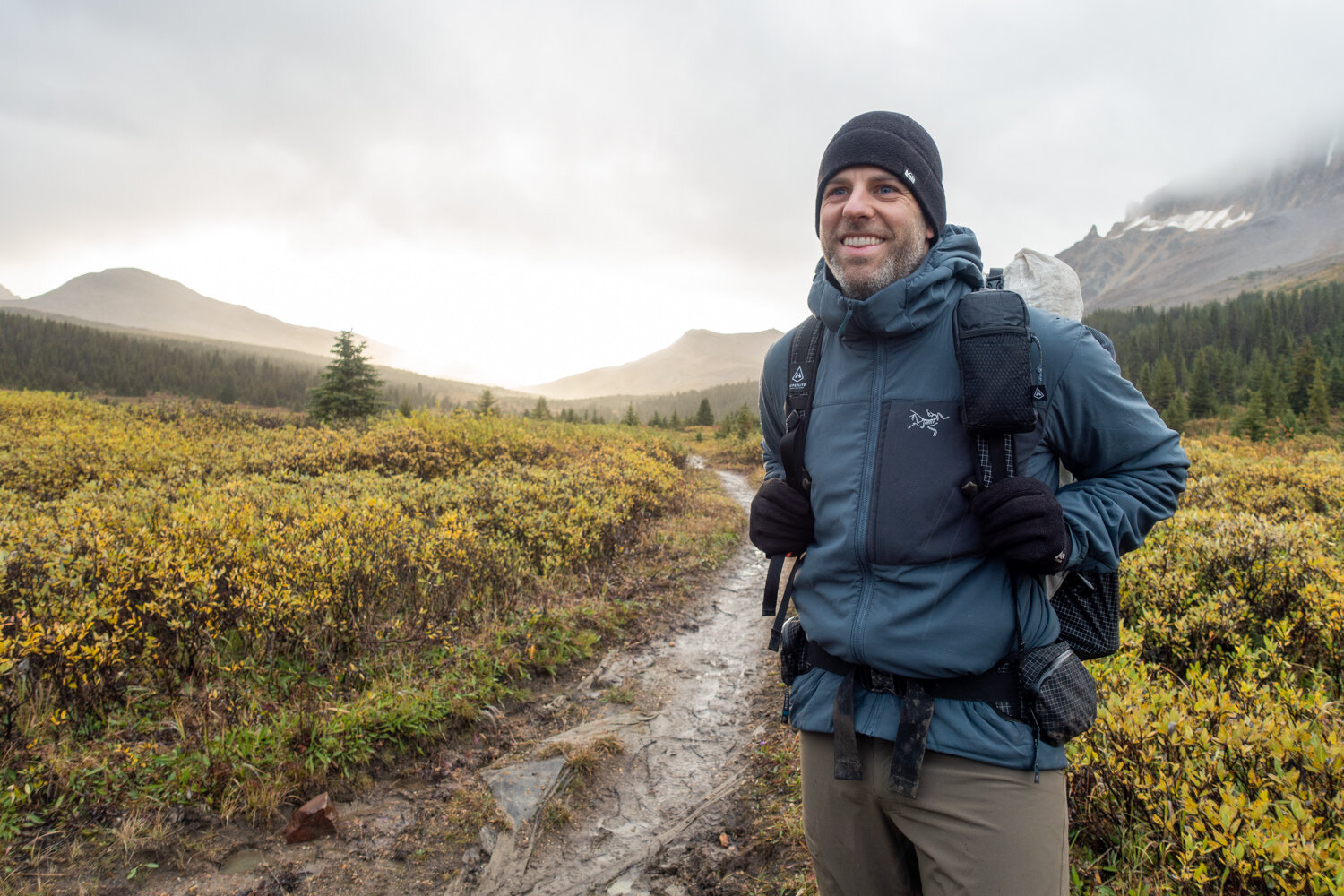
What does a clothing system for rainy hiking look like?
- Summer: Running shorts or hiking pants, alightweight synthetic t-shirt, an ultralight rain jacket, rain pants (unless the weather is really warm), and a baseball/trucker hat to shade our eyes and protect your face from drips.
- Fall, winter, and spring: Hiking pants, a long-sleeve baselayer/quarter-zip top, a rain jacket, rain pants, and a baseball/trucker hat. Depending on how wet/cold the forecast is, we also often bring a warm hat, a fleece pullover, liner gloves, and/or rain mitts.
- Camp clothing essentials for backpacking: We always save a drydown jacket, a pair of baselayer pants, awarm hat, and a pair ofcozy socks for use in camp and for sleeping.
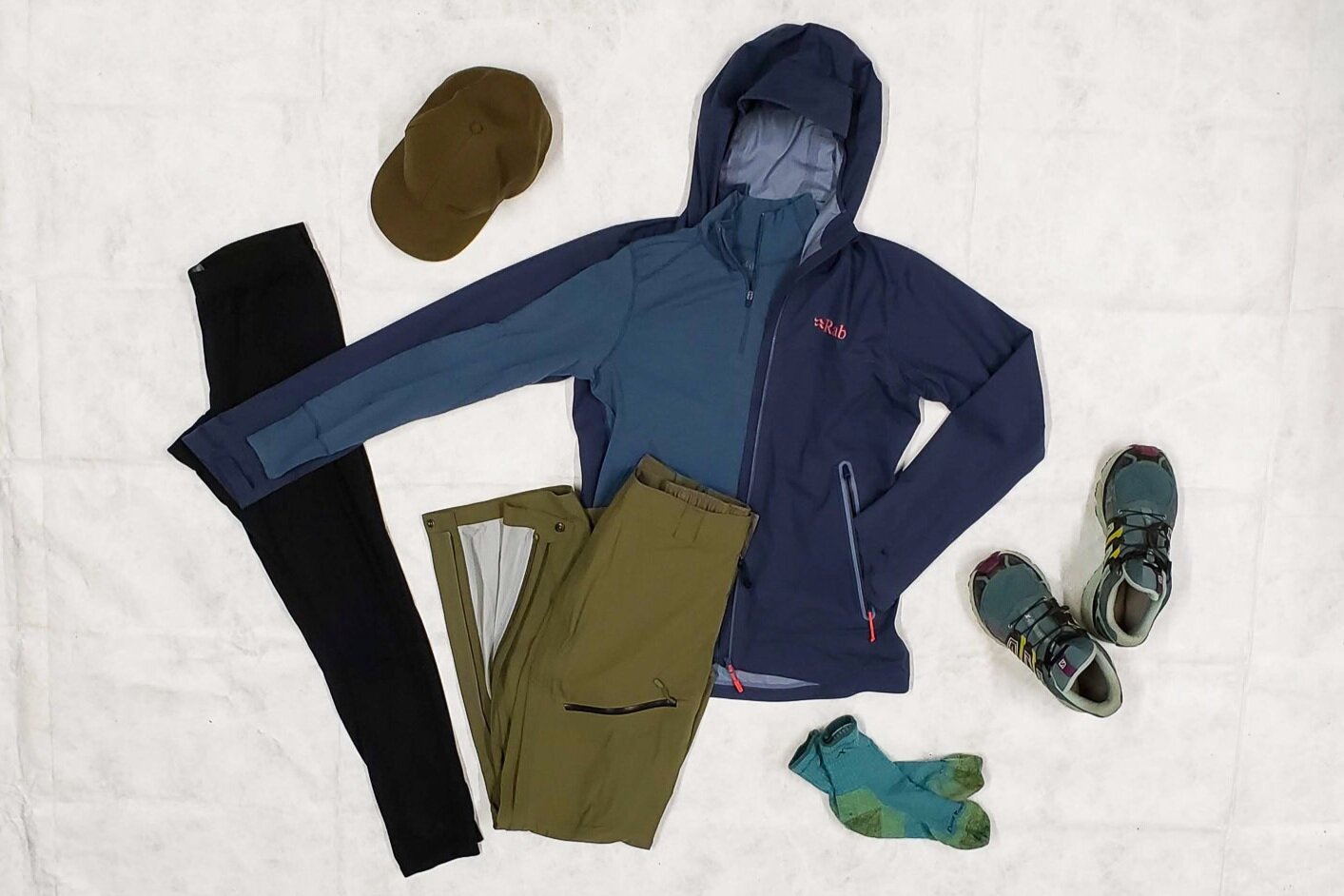
Typical clothing for a wet fall hike
#2 Choose the right fabrics – Because we’re constantly exposed to moisture through sweat and precipitation while hiking, it’s really important to wear clothing that dries quickly. Synthetic fabrics, like polyester and nylon, wick moisture away from the skin and are generally pretty durable and affordable. Natural fibers, like wool, keep you warm even when wet and are naturally antimicrobial for minimal odor buildup. Cotton should be avoided. It stays wet for too long and holds moisture against the skin, which can cause problems like hypothermia, chafing, and blisters.
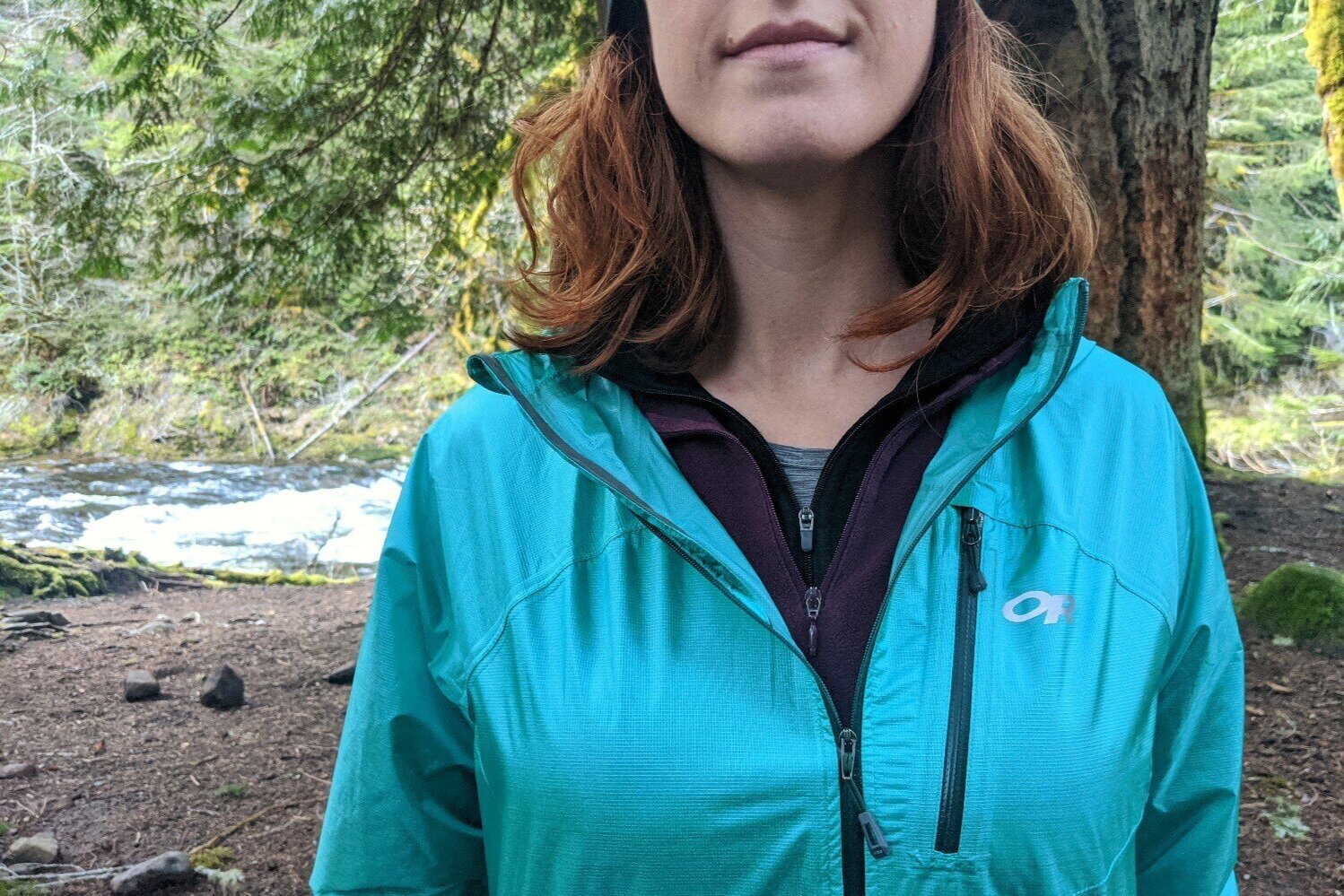
Layering shirts under the Outdoor Research Helium Rain Jacket for cold, wet conditions
#3 Choose footwear wisely – Waterproof shoes and boots are warmer and can be much more comfortable for wet day hikes, especially during cool seasons like fall, winter, and spring. That said, waterproof shoes don’t breathe as well and they tend to dry slowly if they get wet. If you choose waterproof footwear for a multi-day backpacking trip, consider bringing lightweight camp shoes you can put on for fords and stream crossings. If you choose non-waterproof footwear for rainy trips, wear wool socks to keep your feet warm, prepare to keep moving when you’re cold, and always bring thick socks to warm up in camp at the end of the day.
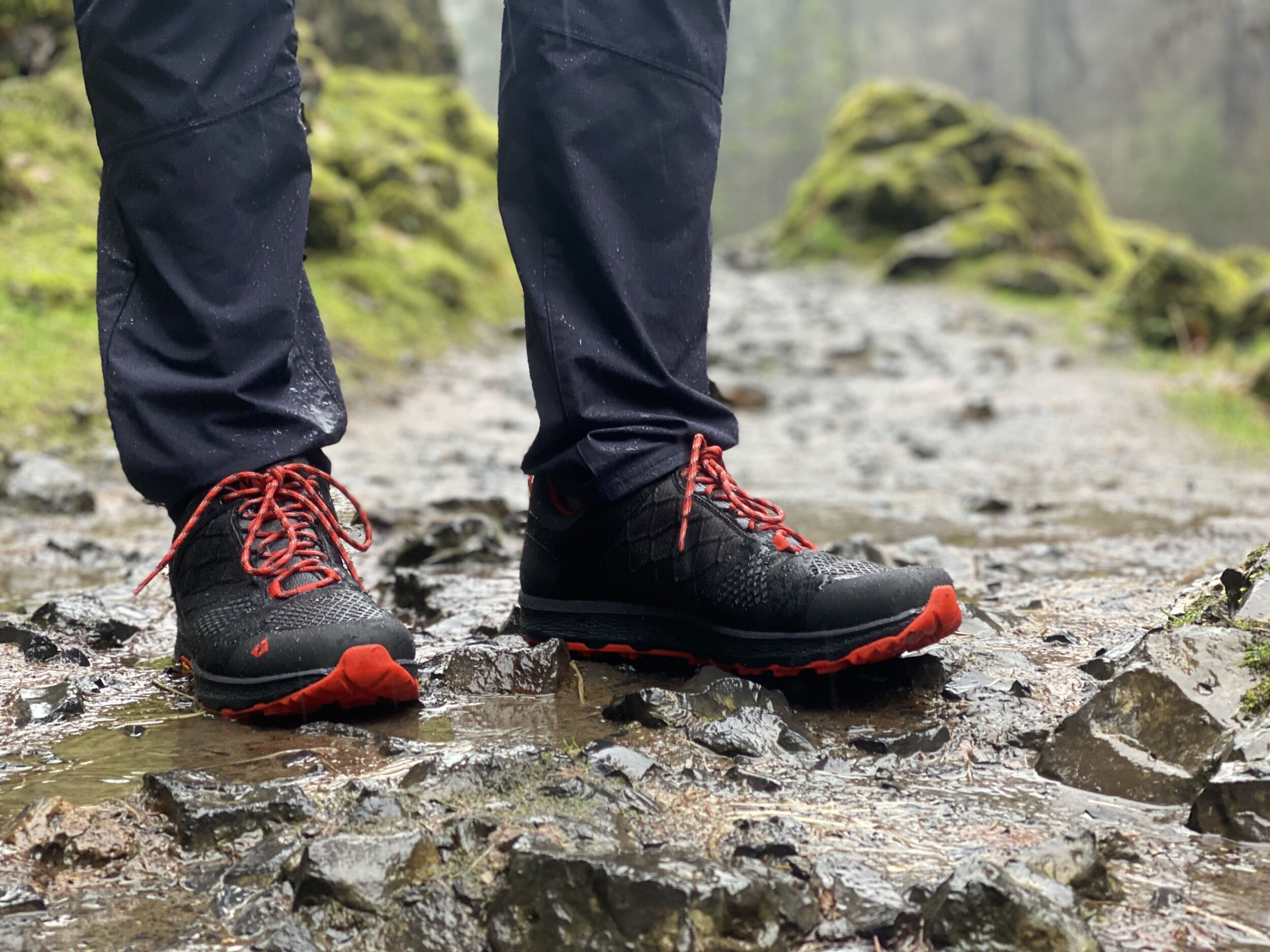
THE VASQUE BREEZE LT LOW GTX ARE HIGHLY BREATHABLE FOR WATERPROOF SHOES
#4 Invest in good socks – High-quality hiking socks make a world of difference in how well your feet hold up in wet conditions. Synthetic or wool socks help keep your feet as dry and comfortable as possible when you’re on the move. We usually bring two pairs of thin or medium-weight socks to cycle between while hiking and a pair of warmer socks reserved for camp. If you prefer non-waterproof shoes, waterproof socks are an option to help keep you warmer and drier. We only recommend waterproof socks for short outings though, since your feet may overheat in them and they aren’t easy to reuse for multiple days without washing.
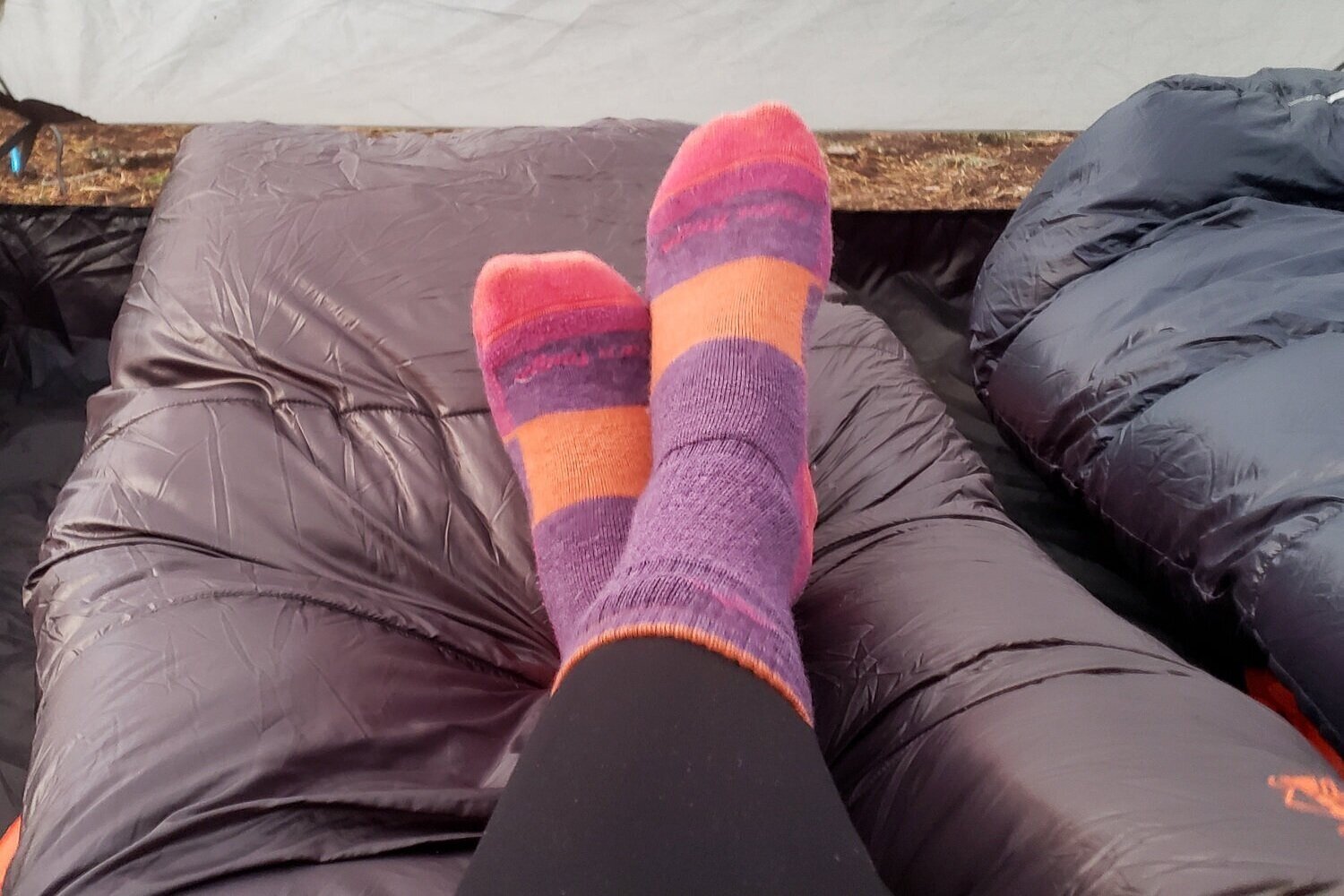
Darn Tough’s Hiker Boot Socks are some of our favorite warm socks to wear in camp on backpacking trips
#5 Use a backpack liner – Most backpacks aren’t waterproof, so your stuff will need to be protected from the elements. There are pack covers that go over the outside of a backpack and pack liners that go inside and function as a large dry bag. We find that pack covers leave too much of your backpack exposed and aren’t effective enough at keeping gear dry when used alone. For really important items, like your sleeping bag and extra clothes, it’s a good idea to pack a waterproof stuff sack or two as well.
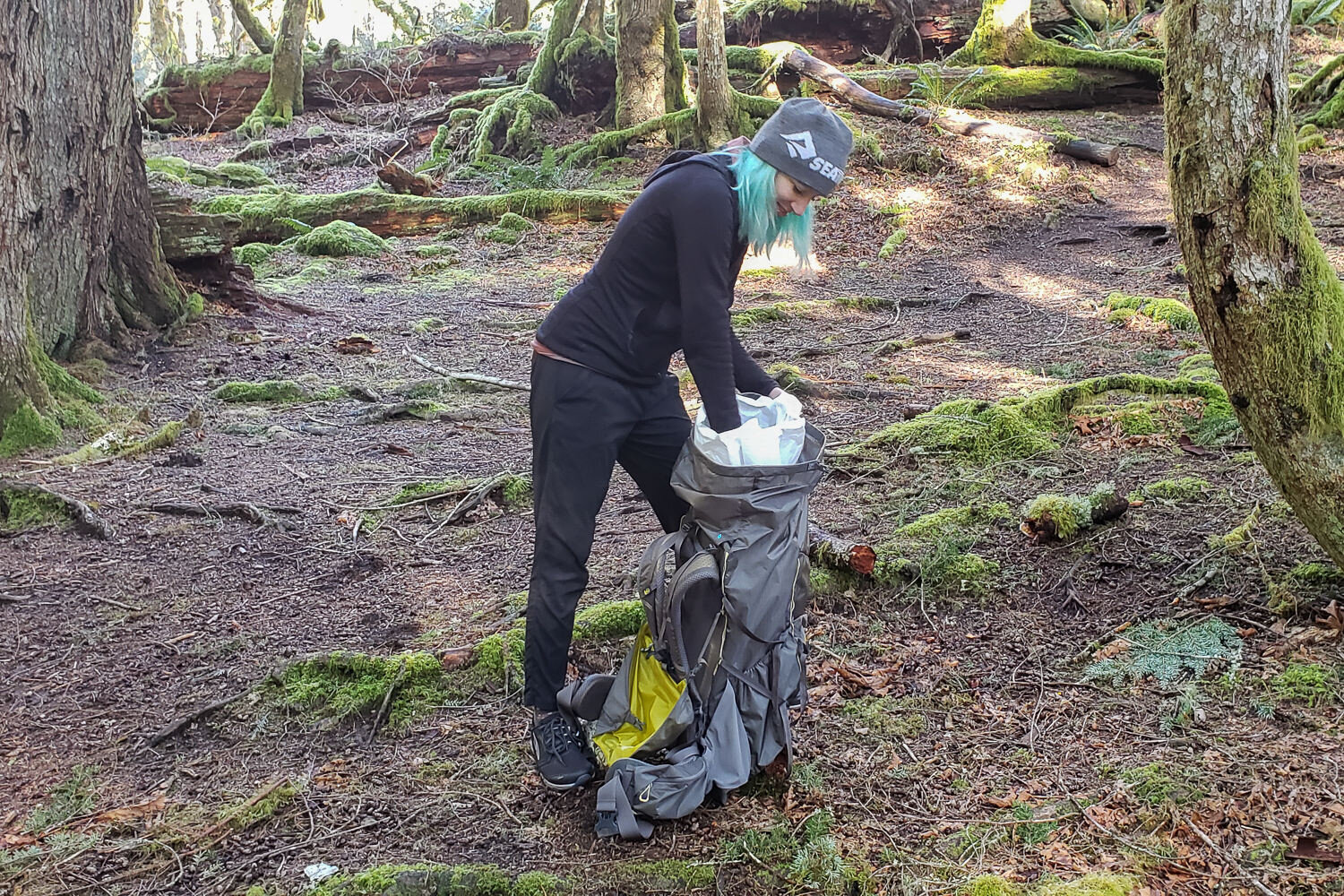
A trash compactor bag makes an inexpensive & effective backpack liner to protect your gear from the elements
The most waterproof backpack: We love theHMG Southwest backpack for multi-day trips in wet conditions because the DCF fabric and taped seams make it one of the most weather-resistant packs we’ve ever tested. If you pair the Southwest with some of HMG’s waterproofstuff sacks/pods, you’ll have an almost completely waterproof system that’s super lightweight and organized for convenient access.
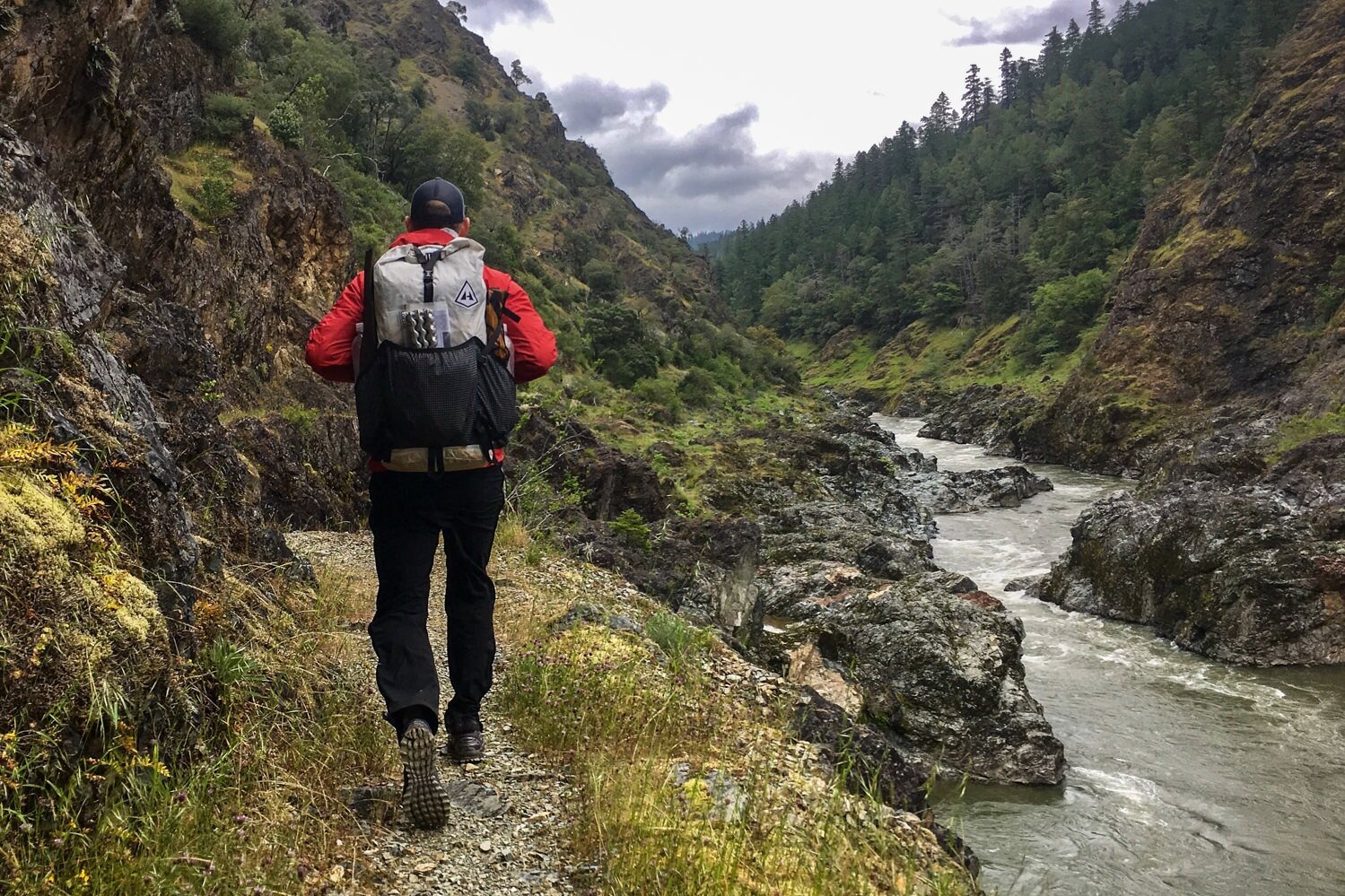
The HMG Southwest is one of the most water-resistant backpacks we’ve ever tested
#6 Keep your rain gear & shelter accessible – If the sky looks ominous, keep your rain jacket, rain pants, and shelter somewhere you can access them quickly without having to expose your dry stuff. When there’s a good chance of rain, we keep our rain gear and tent right at the top of our backpacks so we can easily grab it when we need it. If our tent is wet in the morning, we generally shake it out and store it inside our backpack, but outside of a waterproof backpack liner that contains our other dry gear. If your tent is lightweight enough, you may also be able to store it on the outside of your pack in a large mesh pocket or securely under a strap.
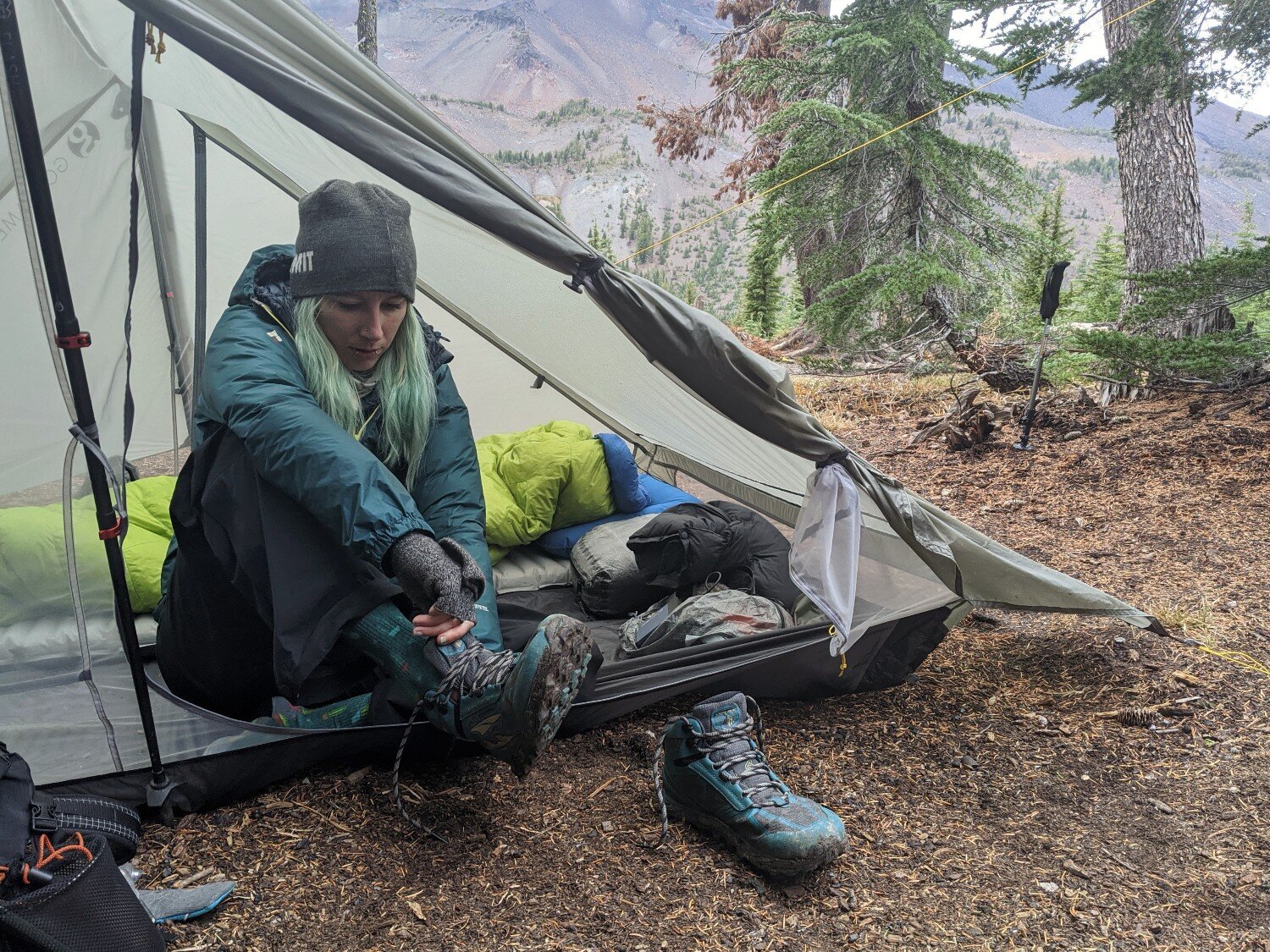
Keep your rain jacket, rain pants & shelter somewhere you can access them quickly without having to expose your dry stuff when you expect rain
#7 Protect important items – When it comes to backpacking, it’s especially important to keep your gear dry in wet conditions since dry clothing, a sleeping bag, and your electronics are your insurance in the backcountry. Protect these items redundantly and reserve some clothing for inside your tent only to ensure you have relief from the elements and you can sleep comfortably. This often means you’ll have to start the next day by putting on cold, wet clothing and shoes from the day before, but don’t worry, you’ll warm up quickly once you get moving. And you’ll be very happy to still have dry clothing when it’s time to crawl inside your tent again.
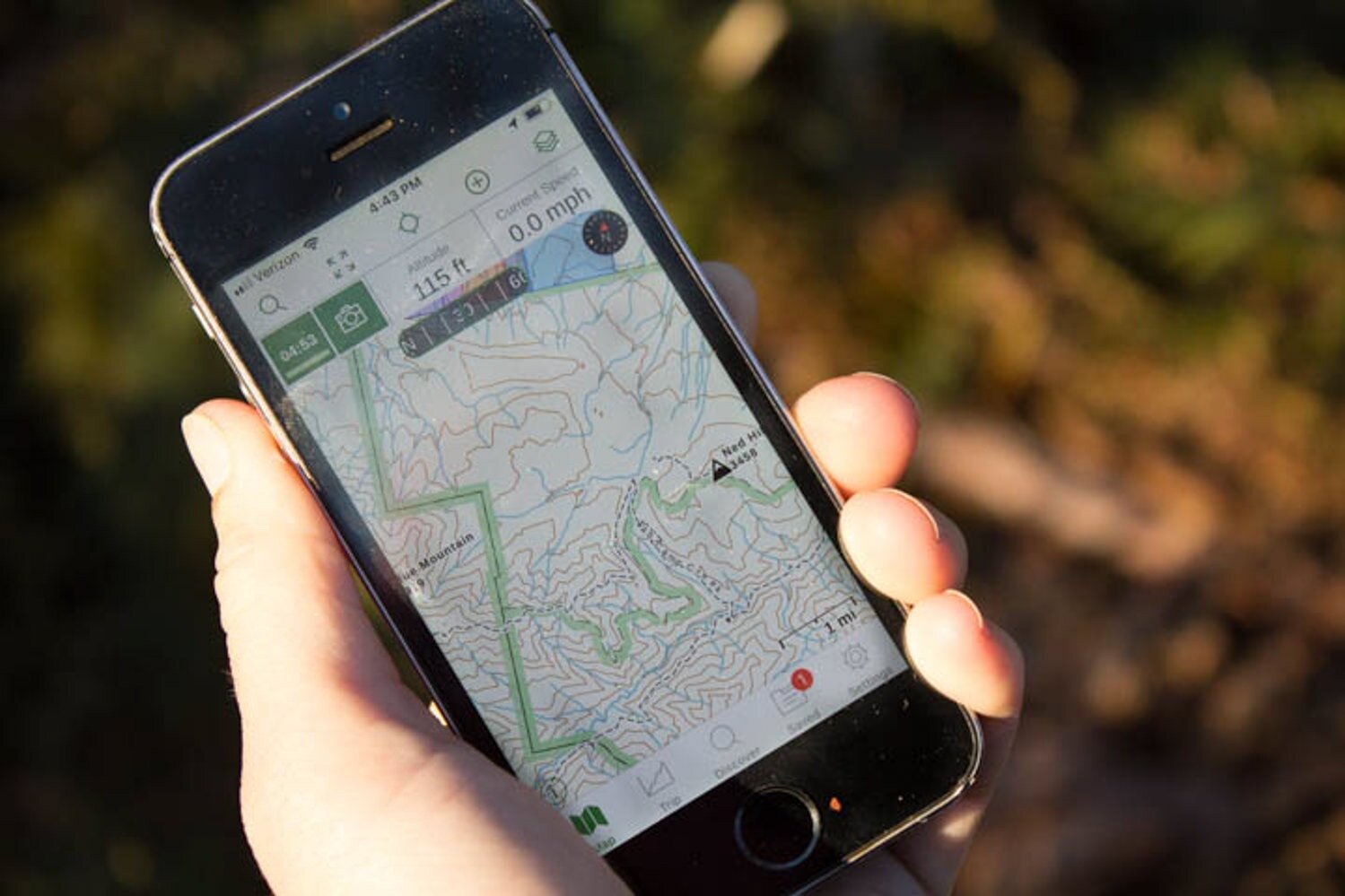
Important items, like phones, should be kept in a waterproof case & in a small dry bag when not in use
#8 Use opportunities to dry out – Something’s bound to get damp on multi-day trips in the rain, even if you try your best to avoid it. Fortunately, most outdoor clothing and gear is made to dry quickly. We usually bring a large safety pin to attach wet socks to the outside of our backpacks so they can dry, or at least air out, as we hike. We also pull damp gear out of our backpacks to dry if the sun pops out during breaks or meal times. Even a few minutes of direct sunlight helps a lot. It’s also a good idea to let your feet dry out at night and once or twice throughout the day if possible to avoid blisters.
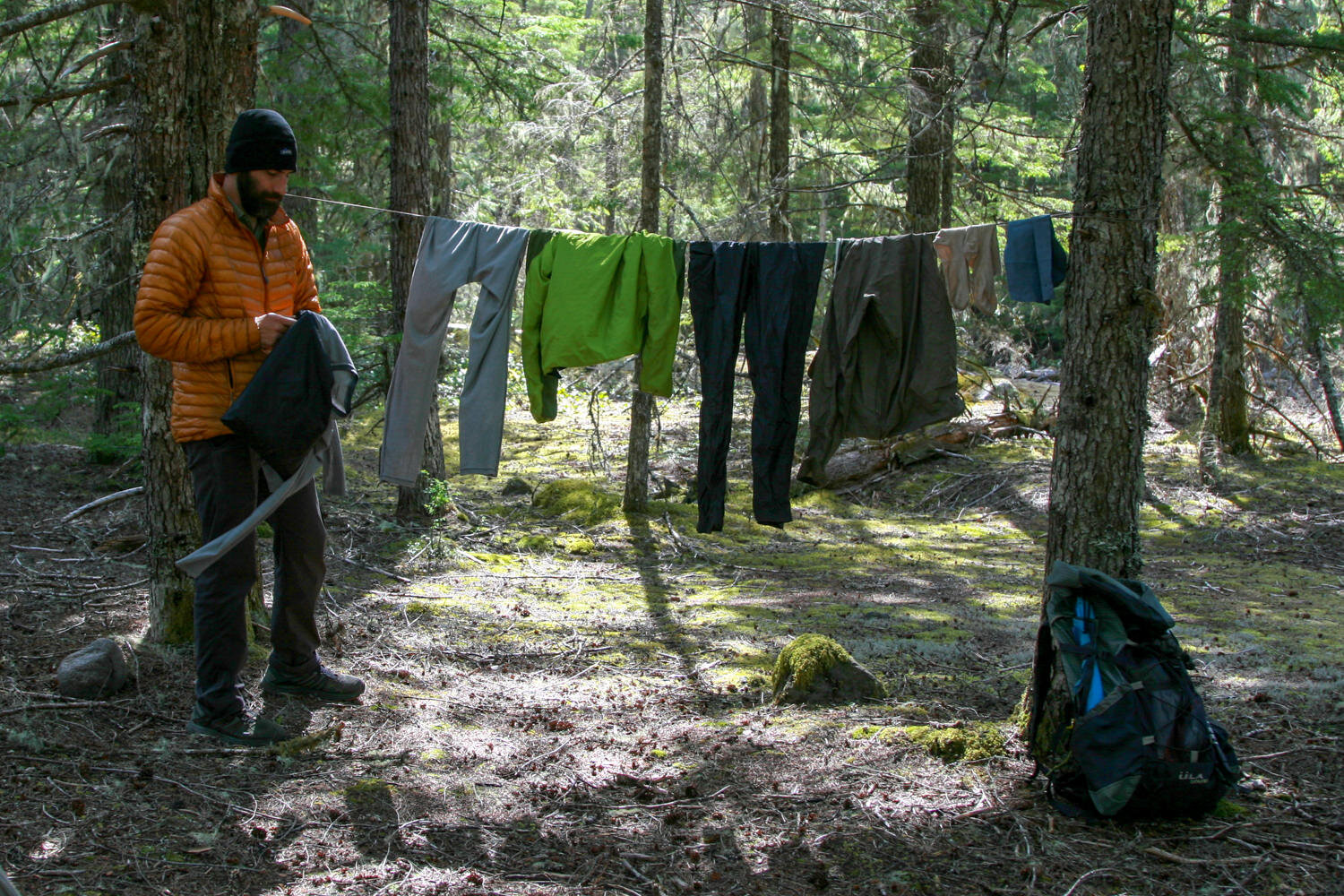
Airflow & a few minutes of direct sunlight can go a long way when you need to dry damp gear
#9 Bring an umbrella – A lightweight, “windproof” umbrella like the Six Moons Designs Silver Shadow can provide excellent rain protection and portable shade. An umbrella is an easy “layer” to take out or stash away while on the move and it won’t retain body heat like a rain jacket. It should be said that these umbrellas don’t work in extremely windy conditions and should not replace proper clothing, but they can make hiking in the pouring rain more comfortable. Some hikers love them, while others find them too fussy and would rather not deal with an additional item. Whether you carry an umbrella or not is a personal choice. We recommend giving it a try to see if it works for you.
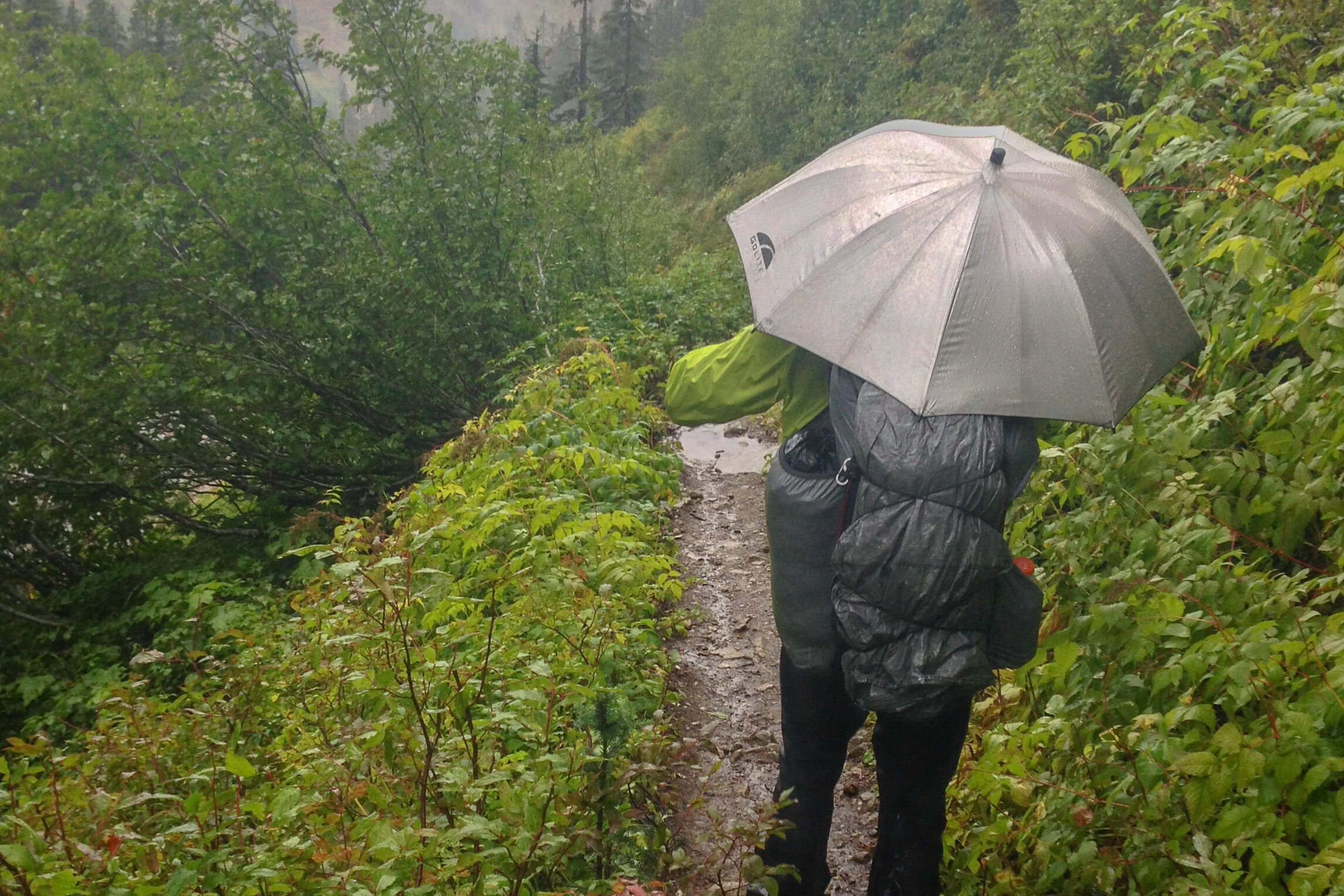
an umbrella like the Six Moons Designs Silver Shadow be an excellent supplement to lightweight rain gear
#10 Have a positive attitude – Having a positive outlook and a sense of humor makes hiking in rainy conditions much more enjoyable. You might be a bit uncomfortable at times, but stormy trips tend to be some of the most memorable. An extra dose of enthusiasm will go a long way to lifting your spirits and those of your hiking partners. If you’re struggling to stay warm, keep in mind that you can always adjust your clothing, pick up your hiking pace, take a break to make a hot beverage, have an impromptu dance party, or even set up camp early if you need to.
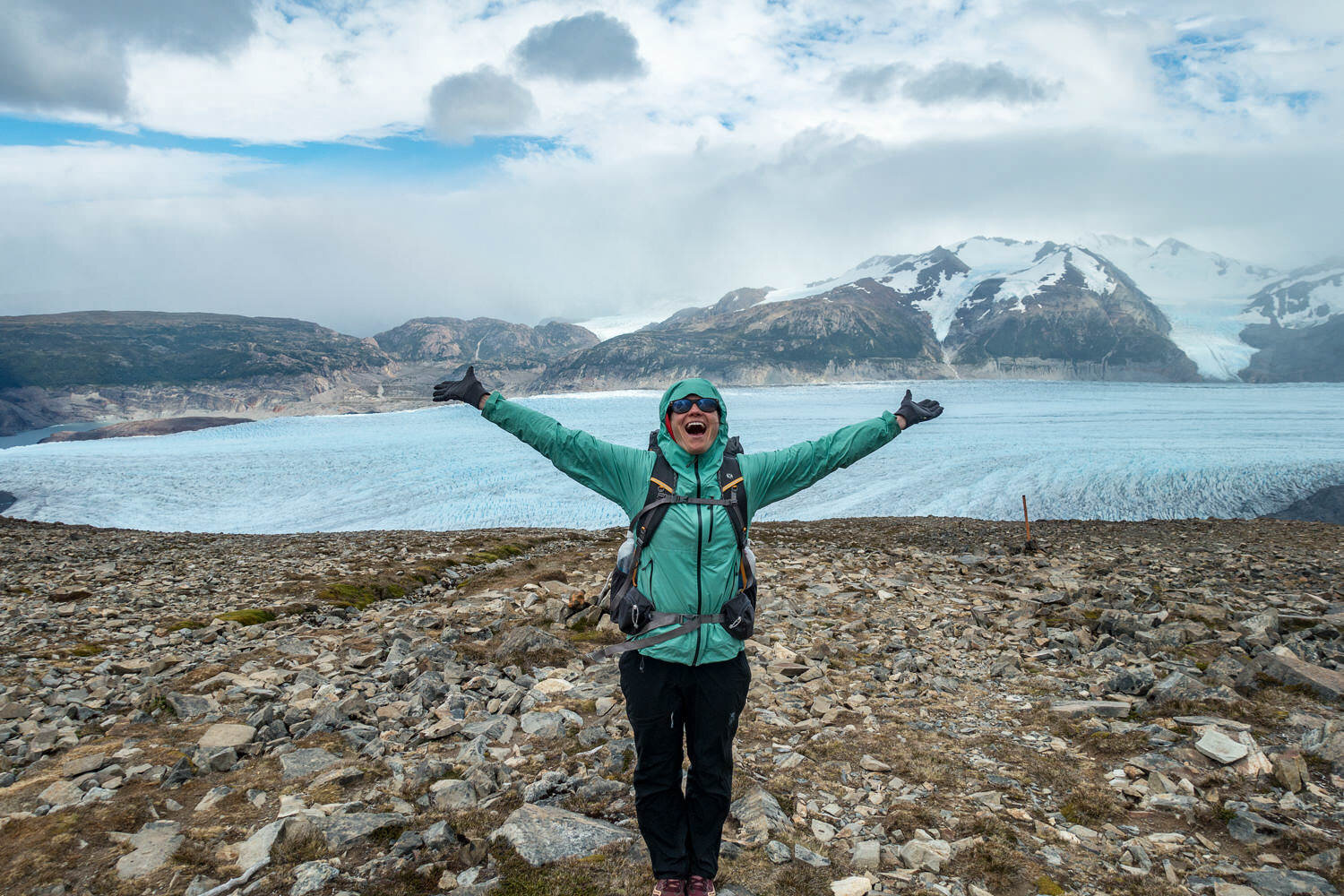
An extra dose of enthusiasm will go a long way to lifting your spirits and those of your hiking partners on rainy trips
More Wet-Weather Tips
We hope you’ve found these tips for hiking in wet conditions helpful. If you liked this post, check out some of these related topics:
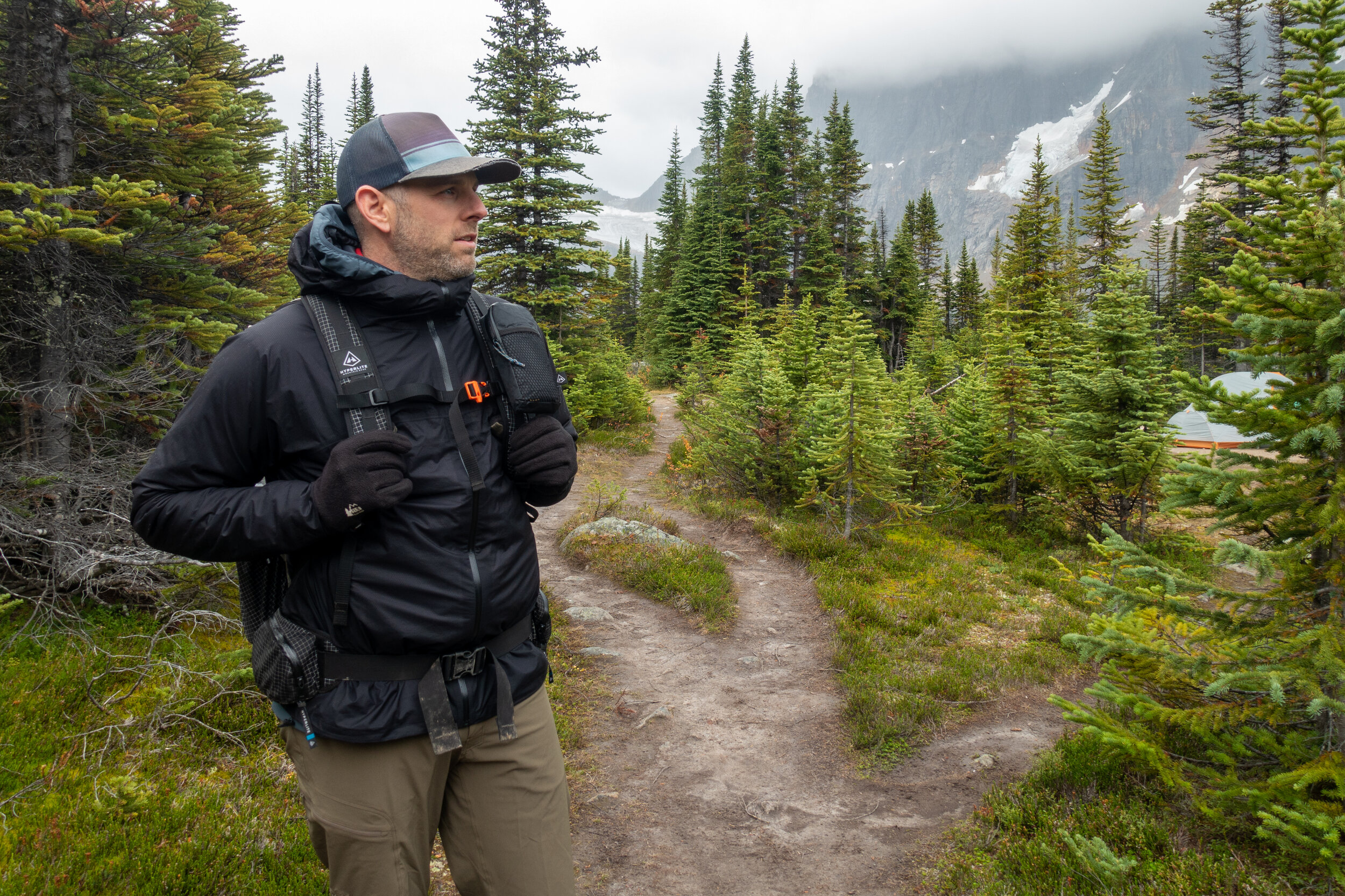
The Arc’teryx Zeta SL is one of the best top-quality lightweight rain jackets on the market
Clothing & Footwear Recommendations
- 10 Best Rain Jackets
- 10 Best Rain Pants
- Best Hiking Boots forMen andWomen
- Best Hiking Shoes forMen andWomen
- Best Trail Running Shoes forMen andWomen lists for more details and options
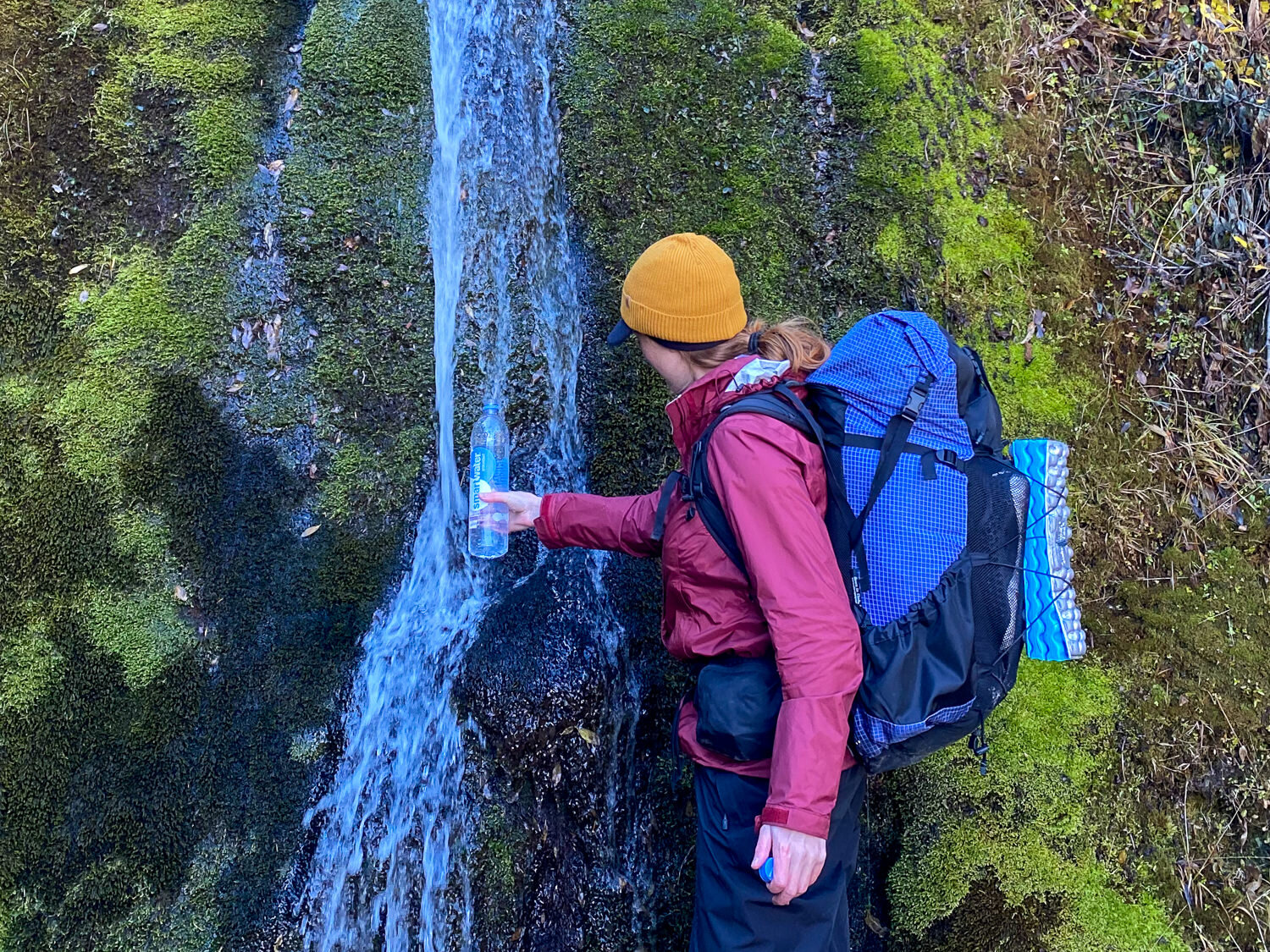
The Marmot Precip Eco is a great lightweight, budget rain jacket
MORE INFORMATION
We hope this guide helps you enjoy your next rainy adventure. As always, please leave a comment below if you have any recommendations, questions, or suggestions or visit our Facebook page and Instagram to join the community conversation. If you found this guide helpful, please share on social media and click the little heart button below to give us a digital high five!
If you enjoyed this guide, you’ll probably like our other gear lists as well. Here are some popular resources from theCleverHiker Gear Guide:
- Best Hiking Footwear
- 10 Best Backpacking Tents
- 10 Best Sleeping Bags & Quilts
- 10 Best Sleeping Pads
- 10 Best Lightweight Backpacks
- Best Stoves, Food, Water Filters, Jackets & More:CleverHiker Gear Guide
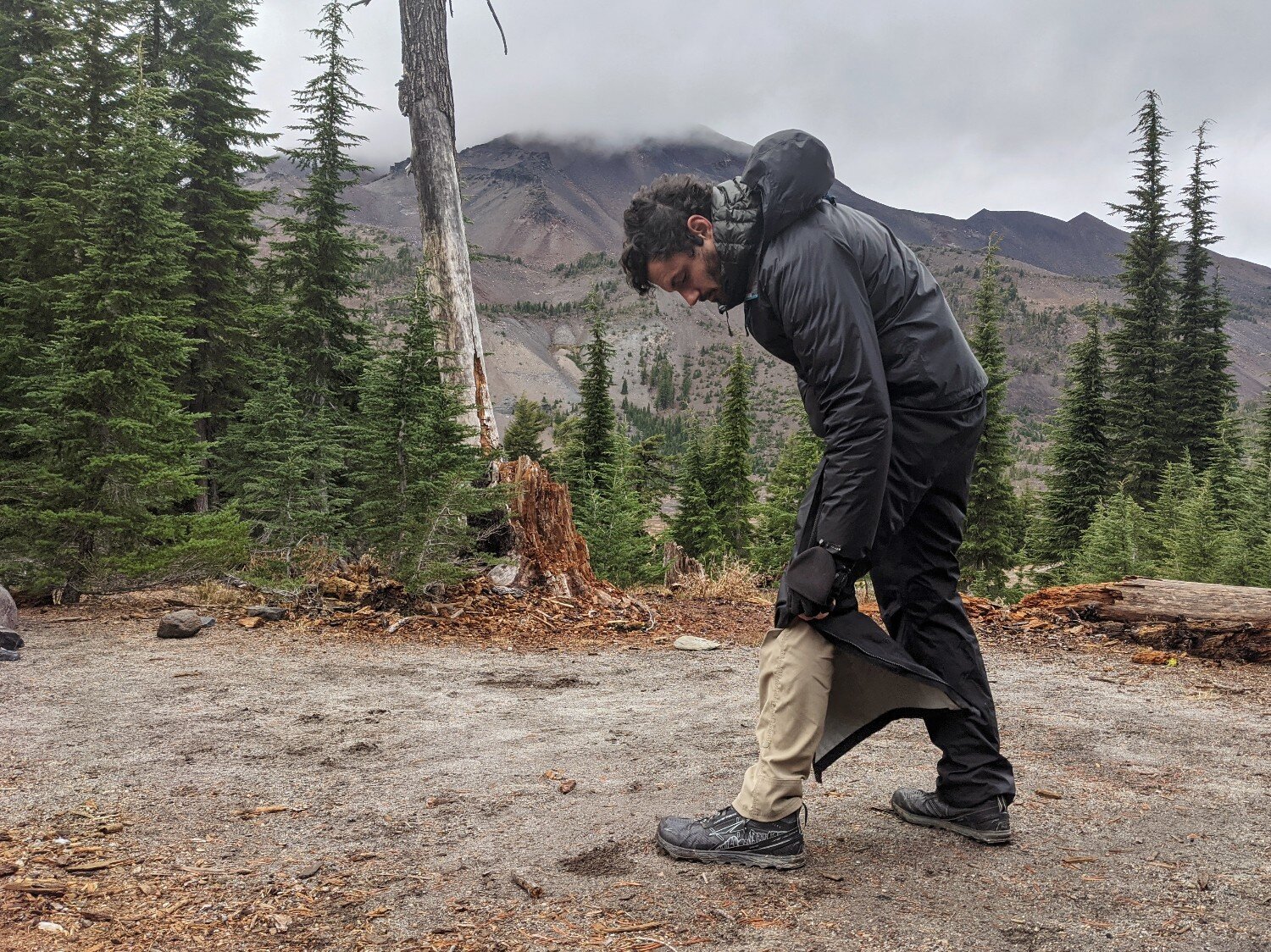
The REI Rainier Full Zip Rain Pants are a lightweight and affordable option
Some of the links on this page are affiliate links, which means we may receive a modest commission if purchases are made through those links. This adds no cost to our readers and helps us keep our site up and running. Our reputation is our most important asset, which is why we only provide completely honest and unbiased recommendations.


